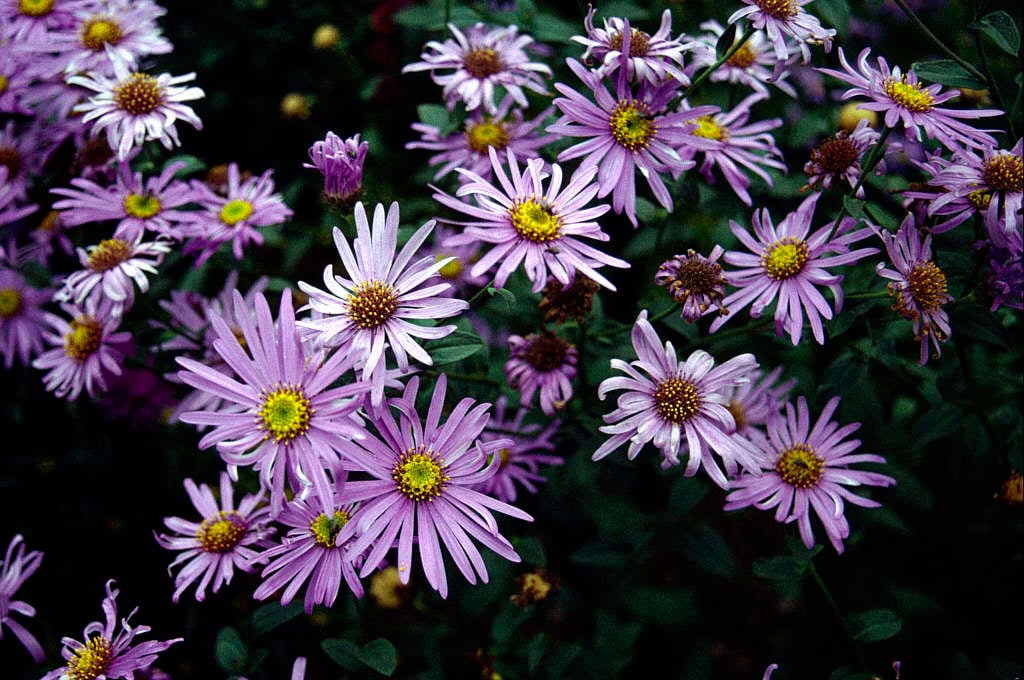Aster × frikartii 'Wunder von Stäfa'
aster 'Wunder von Stäfa'
Vigorous, clump-forming perennial to 70cm tall, with dark green foliage and strong, well-branched stems. Bears loose clusters of long-lasting, yellow to orange-centred, blue daisies 5cm across, in late summer and early autumn
Synonyms
Aster 'Wunder von Stafa'Aster × frikartii 'Wonder of Stafa'
see moreAster × frikartii Wonder of Stafa
Size
Ultimate height
0.5–1 metresTime to ultimate height
2–5 yearsUltimate spread
0.1–0.5 metresGrowing conditions
Moisture
Well–drainedpH
Acid, Alkaline, NeutralColour & scent
| Stem | Flower | Foliage | Fruit | |
| Spring | Green | |||
|---|---|---|---|---|
| Summer | Blue Yellow | Green | ||
| Autumn | Blue Yellow | Green | ||
| Winter |
Position
- Full sun
Aspect
East–facing or South–facing or West–facing
Exposure
Exposed or Sheltered Hardiness
H7Botanical details
- Family
- Asteraceae
- Native to GB / Ireland
- No
- Foliage
- Deciduous
- Habit
- Clump forming
- Genus
Aster can be perennials, annuals or subshrubs, mostly with narrow leaves, and solitary or clustered, daisy-like flowers
- Name status
Accepted
How to grow
Cultivation
Grow in well-drained, moderately fertile soil in an open, sunny position. See aster cultivation
Propagation
Propagate by division in spring or root basal cuttings in spring
Suggested planting locations and garden types
- Coastal
- Cottage and informal garden
- Wildlife gardens
- City and courtyard gardens
- Patio and container plants
- Flower borders and beds
- Cut flowers
Pruning
Deadhead spent flowers to tidy, cut back stem close to the ground in late autumn
Pests
May be susceptible to leaf and bud eelworms, slugs and snails
Diseases
May be susceptible to Verticillium wilt, powdery mildews and grey moulds
Get involved
The Royal Horticultural Society is the UK’s leading gardening charity. We aim to enrich everyone’s life through plants, and make the UK a greener and more beautiful place.

